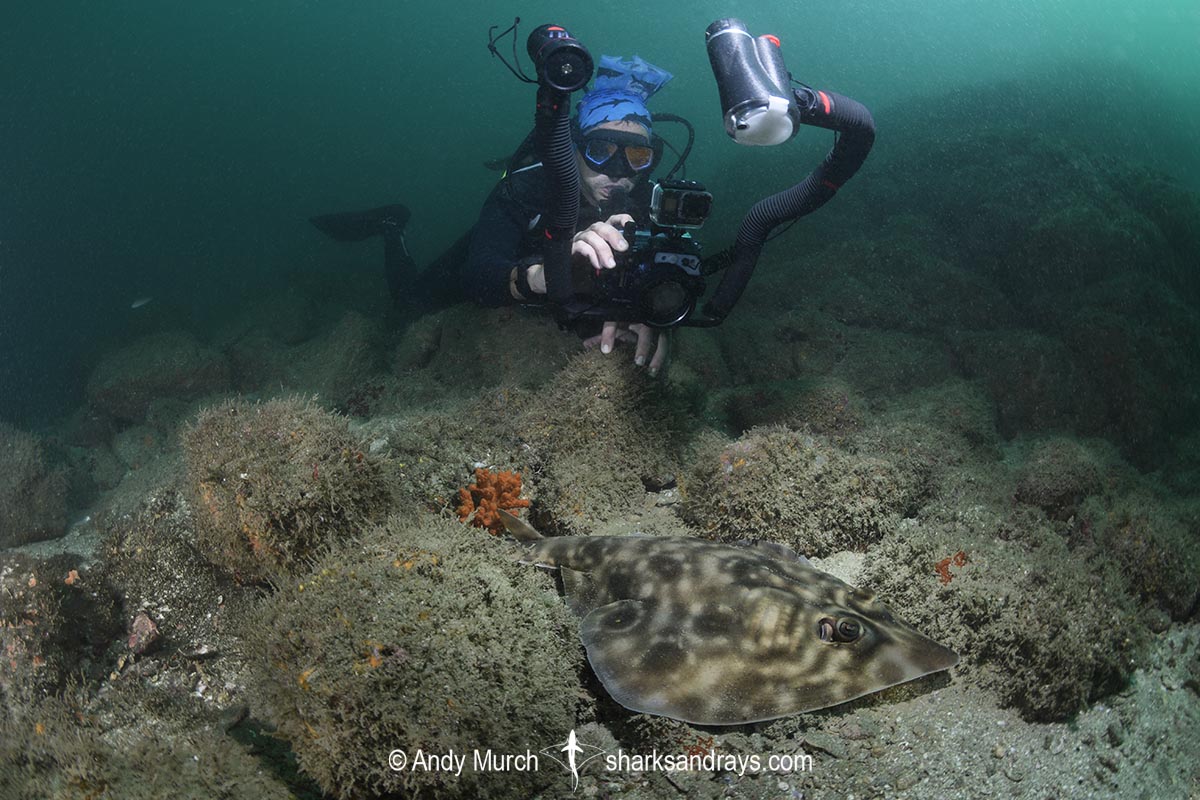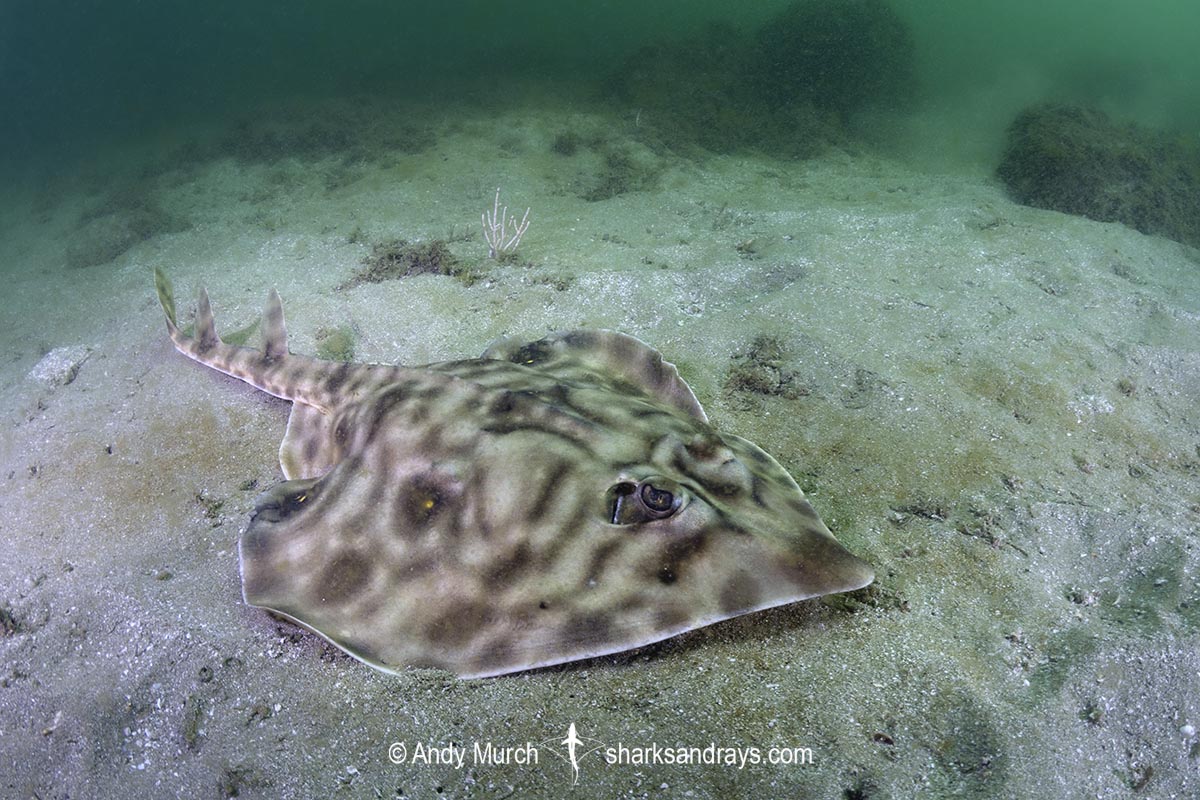Common name(s)
Southern Banded Guitarfish, Witch Guitarfish.
Binomial
Zapteryx xyster
Identification
A medium sized guitarfish with a wide disc and a short, acutely pointed snout. Snout anterior angle approximately 80º. Rostral ridges widely separated throughout their length. Eyes large. Preorbital length 3-4 x orbit length. Nostrils thin and widely separated. Nasal curtain absent. Nasal flaps extend slightly over nostril opening.
Anterior margins of disc straight. Pectoral apices rounded. Dorsum covered in granular denticles. Ventral denticles much smaller and less distinct. Usually 3 orbital thorns. A row of large thorns present forward of each shoulder. Around 12 large thorns on midline from nape to first dorsal fin.
Tail fairly robust. Distance between dorsal fins greater than first dorsal in base length. Dorsal fins with tightly rounded apices and straight posterior margins. Caudal fin triangular, without a defined lower caudal lobe. Upper caudal tip acutely pointed.
Colour
Dorsum and fins beige or greyish-brown with many diffuse darker blotches that form thin bands across disc. Dark brown or black blotches on pectoral fins are filled with many small, yellow spots in adults. Rostral cartilage plain and much lighter than surrounding pigmentation. Ventrum mostly white with a pair of dark blotches near pectoral apices.
Size
Maximum length 78cm. Size at birth 18cm.

Conservation Status
VULNERABLE
The Southern Banded Guitarfish (Zapteryx xyster) is frequently captured and retained in shrimp trawl fisheries as well as gillnet and longline fisheries. Throughout much of this species’ range, there is very little fishery management or enforcement of regulations. It is suspected that the Southern Banded Guitarfish has declined by 30–49% in the last 21 years.

Habitat
Tropical/warm-temperate seas. On rocky reefs and sandy substrates. From very close inshore (observed resting in 3m) to 150m.
Distribution
Eastern Pacific. Found from central México to northern Peru.
Reproduction
Aplacental viviparous. Litter size ~6.
Diet
Feeds at night mainly on small benthic fishes and prawns.
Behavior
Poorly known.
Reaction to divers
Very easy to approach. Usually remains motionless unless closely harassed.
Diving logistics
Southern banded guitarfish are relatively common at dive sites in Guanacaste, Costa Rica, during the colder months from December to March. In early January, they were particularly abundant on the shallow reef a few meters offshore at Playa El Jobo.
What’s new
View our full list of updates
Similar species
Banded Guitarfish Distinguished by more rounded snout and plainer pattern without clusters of yellow spots.











